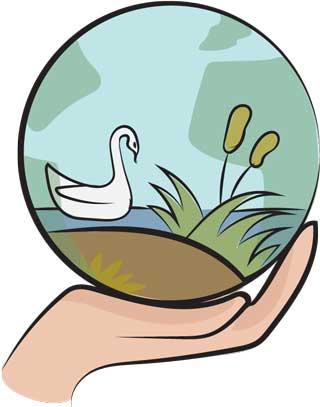Reply To:
Name - Reply Comment
While the Government still struggling hard to get Sri Lanka out of its worst socio-economic crisis since independence, there are other vital world issues to which we need close attention. One of those main issues is climate change and its devastating effects. A key area is wetlands and what we are doing or not doing about them.
 On February 2, the United Nations marks the World Wetlands Day with the aim of reviving and restoring degraded wetlands. In a statement, the world body says Wetlands are ecosystems where water is the primary factor controlling the environment and the associated plant and animal life. A broad definition of wetlands includes both freshwater and marine and coastal ecosystems such as all lakes and rivers, underground aquifers, swamps and marshes, wet grasslands, peatlands, oases, estuaries, deltas and tidal flats, mangroves and other coastal areas, coral reef, and all man-made sites such as fishponds, rice paddies, reservoirs and saltpans.
On February 2, the United Nations marks the World Wetlands Day with the aim of reviving and restoring degraded wetlands. In a statement, the world body says Wetlands are ecosystems where water is the primary factor controlling the environment and the associated plant and animal life. A broad definition of wetlands includes both freshwater and marine and coastal ecosystems such as all lakes and rivers, underground aquifers, swamps and marshes, wet grasslands, peatlands, oases, estuaries, deltas and tidal flats, mangroves and other coastal areas, coral reef, and all man-made sites such as fishponds, rice paddies, reservoirs and saltpans.
According to the UN these lands are critical to people and nature, given the intrinsic value of these ecosystems, and their benefits and services, including their environmental, climate, ecological, social, economic, scientific, educational, cultural, recreational and aesthetic contributions to sustainable development and human wellbeing.
Though they cover only around 6% of the Earth’s land surface, 40% per cent of all plant and animal species live or breed in wetlands. Wetland biodiversity matters for our health, our food supply, for tourism and for jobs. Wetlands are vital for humans, for other ecosystems and for our climate, providing essential ecosystem services such as water regulation, including flood control and water purification. More than a billion people across the world depend on wetlands for their livelihoods – that’s about one in eight people on Earth.
Explaining why the wetlands are in danger the UN says Wetlands are among the ecosystems with the highest rates of decline, loss and degradation. Indicators of current negative trends in global biodiversity and ecosystem functions are projected to continue in response to direct and indirect drivers such as rapid human population growth, unsustainable production and consumption and associated technological development, as well as the adverse impacts of climate change.
Wetlands are disappearing three times faster than forests and are Earth’s most threatened ecosystem. In just 50 years — since 1970 — 35% of the world’s wetlands have been lost. Human activities that lead to loss of wetlands include drainage and infilling for agriculture and construction, pollution, overfishing and overexploitation of resources, invasive species and climate change.
This vicious cycle of wetland loss, threatened livelihoods, and deepening poverty is the result of mistakenly seeing wetlands as wastelands rather than life-giving sources of jobs, incomes, and essential ecosystem services. A key challenge is to change mindsets to encourage governments and communities to value and prioritize wetlands
Wetlands are a natural solution to the era-defining global threat of climate change. They absorb carbon dioxide so help slow global heating and reduce pollution, hence have often been referred to as the “Kidneys of the Earth”. Peatlands alone store twice as much carbon as all the world’s forests combined. But, when drained and destroyed, wetlands emit vast amounts of carbon. Wetlands also provide a buffer against the impacts of floods, droughts, hurricanes and tsunamis, and build resilience to climate change.
Outlining what we can do the UN says It is urgent that we raise national and global awareness about wetlands to reverse their rapid loss and encourage actions to conserve and restore them. World Wetlands Day is the ideal time to increase people’s understanding of these critically important ecosystems.
“Revive and restore degraded wetlands” is the theme for this year highlighting the importance of wetlands’ restoration, since well-restored wetlands can provide many of the services performed by the original natural wetland.
An urgent call to take action and to invest financial, human and political capital is this year’s appeal to save the world’s wetlands from disappearing altogether — and to restore those we have already lost.
There are currently more than 2,400 Ramsar Sites - a wetland site designated to be of international importance under the Ramsar Convention-- around the world. They cover more than 2.5 million square km, an area larger than Mexico. The network of Ramsar Sites includes coastal and inland wetlands of all types. The Convention on Wetlands works to reverse wetland loss and degradation worldwide.